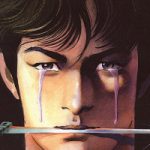Hikaru no Go
Regions: Japan

Since it was first published in Japan as a manga series in 1998 and adapted into an anime series in 2001, Hikaru no Go continues to be an international pop cultural phenomenon inspiring readers in many countries to take up the ancient Chinese strategy board game called Go. Created by Yumi Hotta and illustrated by Takeshi Obata, the series began publication in the boys’ manga magazine Weekly Shōnen Jump published by Shuiesha. When first published was not only an instant hit with readers. It turned interest in the game of Go into a national sensation. With a supernatural storyline involving elementary school age Hikaru’s discovery of a long forgotten Go game board which conjures up the centuries-old spirit of Fujiwara no Sai, a Go champion who possesses and inhabits the minds of the board’s player, the series captured readers’ imagination with Hiakru’s super feats of gamesmanship and strategy training enabled by his own personal Go prodigy invisible to everyone but Hikaru. But what also captivates readers is the manga’s realistic portrayal of the playing of Go as well as attention to strategy and tactics, a level of dedication to detail provided by the ongoing involvement of professional Go player Yukari Umezawa as a consultant on the series.
Before its English publication in 2003, Hikaru no Go had already been translated for manga fans in Hong Kong, South Korea, Singapore, Thailand and Taiwan. In South East Asian countries where the translated series became available, rising numbers of Go players as well as the growth of Go clubs and increasing numbers of contestants appearing at tournaments were being reported by national Go associations in news media stories, all citing Hikaru no Go as a direct influence. With the release of the French translation Go player associations in Paris helped promote the newly released with Go demonstrations by volunteer members. By 2004 popular media outlets in the US were reporting on young fans of the series seeking out Go clubs and tournaments. Over ten years later, European and US media outlets continue to report on youths taking up Go and playing at amateur events inspired by the continuing availability of the anime series.
As an influence on the rest of world taking up the game of Go Hikaru no Go is without precedent. But as a manga that grew interest in a nationally recognised competitive game, Hikaru no Go is only one of dozens of manga series dedicated to sports, martial arts and competitions. Moreover, Nikaru no Go’s depiction of Hikaru and Sai’s brother-like friendship growing through cooperation shows the range of themes and values threaded through sports manga story lines which readers, both male and female, strongly identify with, such as friendship, perseverance, sporting prowess, rivalries, teamwork, sportsmanship, dedication and endurance. In fact, with Sai’s feminine appearance and attire as a Heian noble as well as the focus of the series on school relationships, Hikaru no Go has enjoyed a strong female readership.
As an influential cultural phenomenon recognised for its impact on young people globally, the animated series has also been the target of concern over depictions of underage cigarette smoking in children’s cartoons.
— Mio Bryce and Jason Davis
Further Reading
- Bryce, Mio, and Davis, Jason. “An Overview of Manga Genres.”In Manga: An Anthology of Global Perspectives, edited by Toni Johnson-Wood, 34-61. New York: Continuum, 2010. Print.
- Moskowitz, Marc L. Go Nation: Chinese Masculinities and the Game of Weiqi in China. Berkeley: University of California Press. 2013. Online.
- Wood, Andrea. “Drawing Disability in Japanese Manga: Visual Politics, Embodied Masculinity, and Wheelchair Basketball in Inoue Takehiko’s REAL.” Culture, Medicine and Psychiatry, 37: 638-655. 2013. Online.


